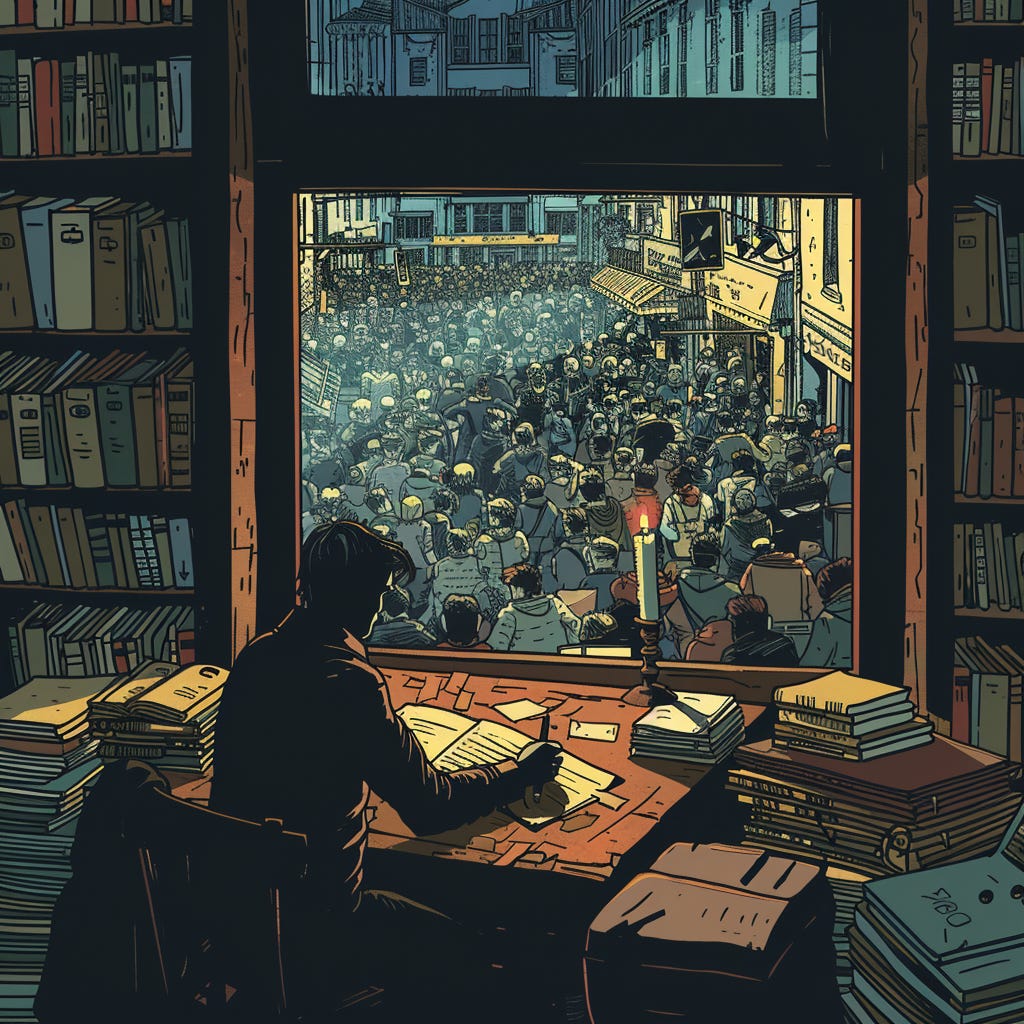In the intricate web of digital evolution, Substack has transformed from a simple platform for newsletters into a burgeoning social network. This shift is not merely functional; it is a profound commentary on our collective psyche, reflecting both our desires and discontents. As we navigate this metamorphosis, we find ourselves at the intersection of introspection and connectivity, where the symbols of our age merge into a new digital mythology.
Initially, Substack resembled a hermit's sanctuary—a solitary writer in a cloistered space, sending missives into the void. The newsletters were intimate, almost confessional, whispers shared in the quiet of the night. Readers, scattered like stars, received these whispers and often responded thoughtfully. This exchange evoked the epistolary traditions of old, with a purity and simplicity that modern digital platforms seldom capture. Yet, the relentless winds of change have reshaped this tranquil landscape.
Substack's evolution into a social network is symbolized by the introduction of Substack Notes, along with comment sections, likes, and shares. Substack Notes, designed for short-form content and rapid interactions, embodies the dynamism of social media while striving to retain the depth for which Substack is known. Here, the solitary writer becomes a participant in a larger conversation, their words no longer isolated but intertwined with the thoughts and reactions of many. This shift transforms the solitary act of writing into a communal dance, a shared performance in the digital amphitheater.
However, this evolution is fraught with complexities. Substack—a platform built on depth and nuance—seems at odds with the superficial nature of traditional social networks, where brevity and virality reign supreme. Substack Notes exacerbate this tension. The rich, philosophical musings that characterize many Substack publications risk being overshadowed by memes, soundbites, and the quick exchanges that Notes facilitates. It is often trending to post about growth hacking or lavishly praise Substack itself. This tension between depth and superficiality, between contemplation and immediacy, mirrors the broader existential struggle of our digital age.
Within this new social fabric, we see the potential for both profound connection and alienation. Substack Notes can foster vibrant dialogue, where diverse voices explore ideas in depth. Yet, it can also become an arena of conflict, where the loudest voices drown out subtler, nuanced ones. This duality is emblematic of the human condition: our simultaneous yearning for connection and propensity for discord.
Substack's journey contrasts starkly with the sprawling empires of tech giants like Facebook, Twitter, and Instagram. While these platforms thrive on algorithms designed to maximize engagement, often at the cost of meaningful discourse, Substack champions a different ethos. It seeks to empower writers and readers with direct, unmediated connections, prioritizing substance over sensationalism. This stance is a deliberate resistance against the commodification of attention that defines the tech behemoths.
Moreover, Substack's architecture—its algorithms and interface—carries symbolic weight. How we interact with technology shapes our perceptions and realities. Substack's algorithms can create echo chambers or bridges, depending on their design and our engagement. This technological determinism is a modern Promethean fire, offering both illumination and peril. Substack’s model, emphasizing paid subscriptions and direct relationships, offers hope—an antidote to the ad-driven economies that dominate other platforms.
Yet, within this evolving landscape, there lies an undeniable beauty. The act of writing, sharing, and engaging on Substack retains a rawness and vulnerability rare in the polished veneer of traditional social media. Writers bare their souls, and readers respond with their own vulnerabilities, creating a tapestry of human experience that is as complex as life itself. Substack Notes, capturing fleeting thoughts and reflections, paradoxically enhances this rawness, adding immediacy to profound dialogue.
In this grand narrative of Substack's transformation, we are both protagonists and spectators, our stories form into the larger mosaic of digital evolution. The symbols we encounter—likes, shares, comments, and now Notes—are signposts guiding us through the labyrinthine journey of human connection in the digital age. As Substack continues to evolve, it challenges us to reflect on our roles within this narrative and to foster genuine connections amidst the noise of the social network.
Ultimately, Substack's metamorphosis into a social network, highlighted by the introduction of Substack Notes, is a microcosm of our broader societal transformation. It reflects our collective quest for meaning and connection in an increasingly fragmented world. It is a testament to the enduring power of the written word and our innate desire to share our stories, to be heard and understood. As we navigate this new terrain, we hope that amidst the noise, we will find moments of true resonance, where the symbols of our age coalesce into a symphony of human experience.
/Fyodor


